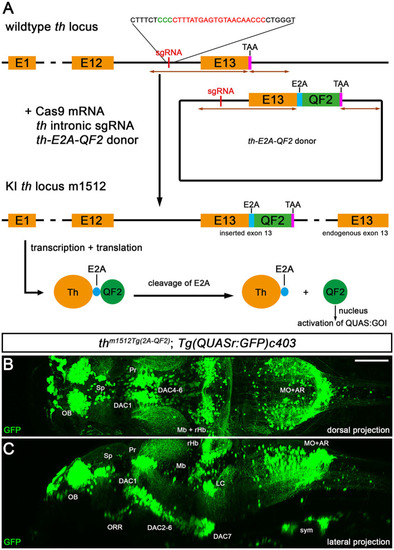Figure 1
- ID
- ZDB-FIG-230822-1
- Publication
- Altbürger et al., 2023 - CRISPR/Cas9-based QF2 knock-in at the tyrosine hydroxylase (th) locus reveals novel th-expressing neuron populations in the zebrafish mid- and hindbrain
- Other Figures
- All Figure Page
- Back to All Figure Page
|
Knock-in of QF2 into the |

